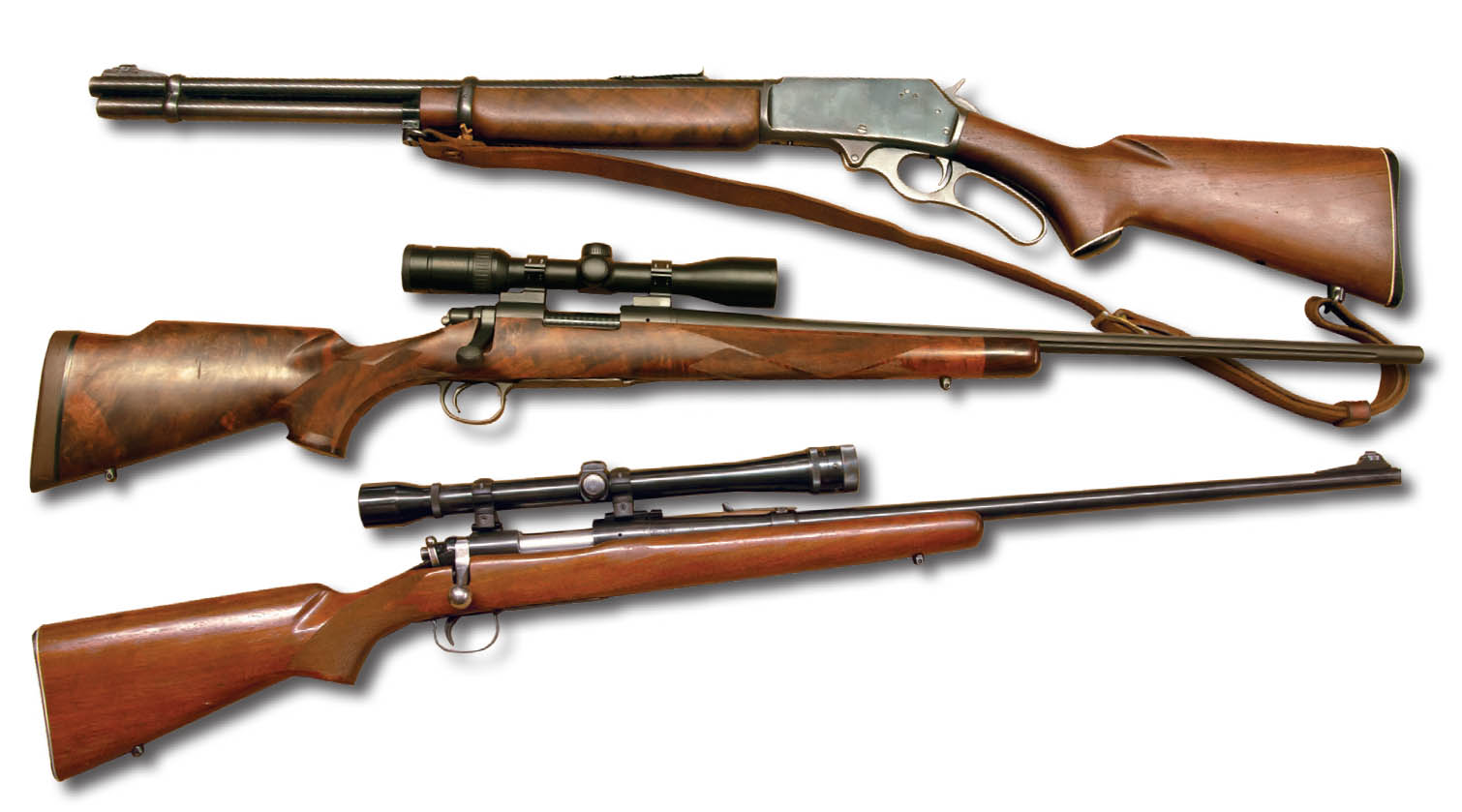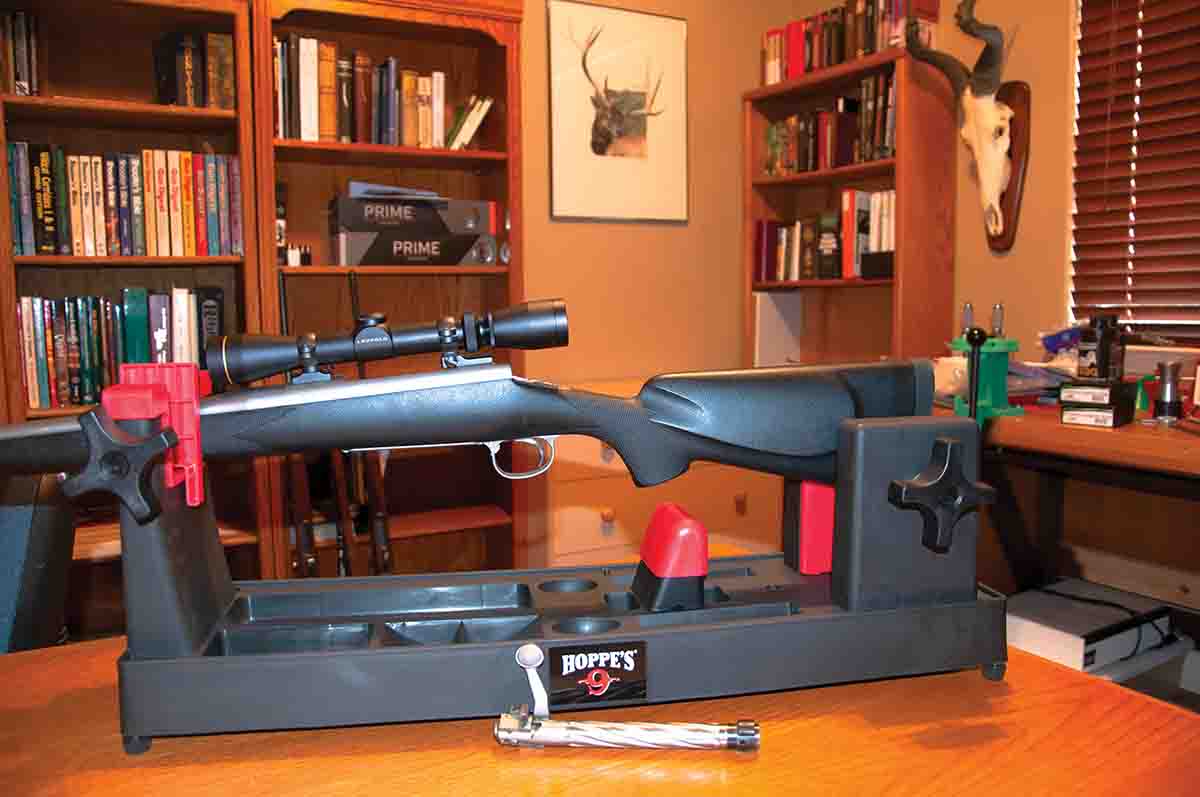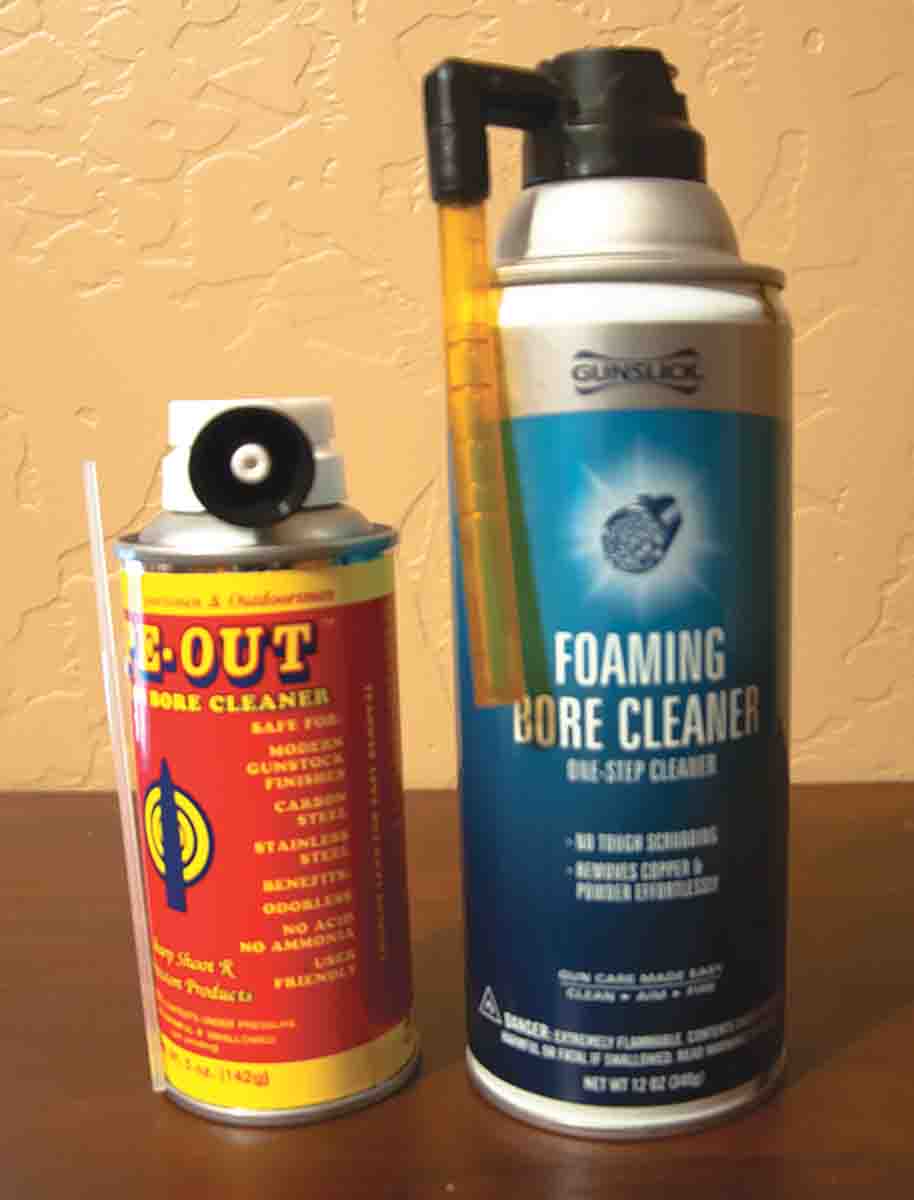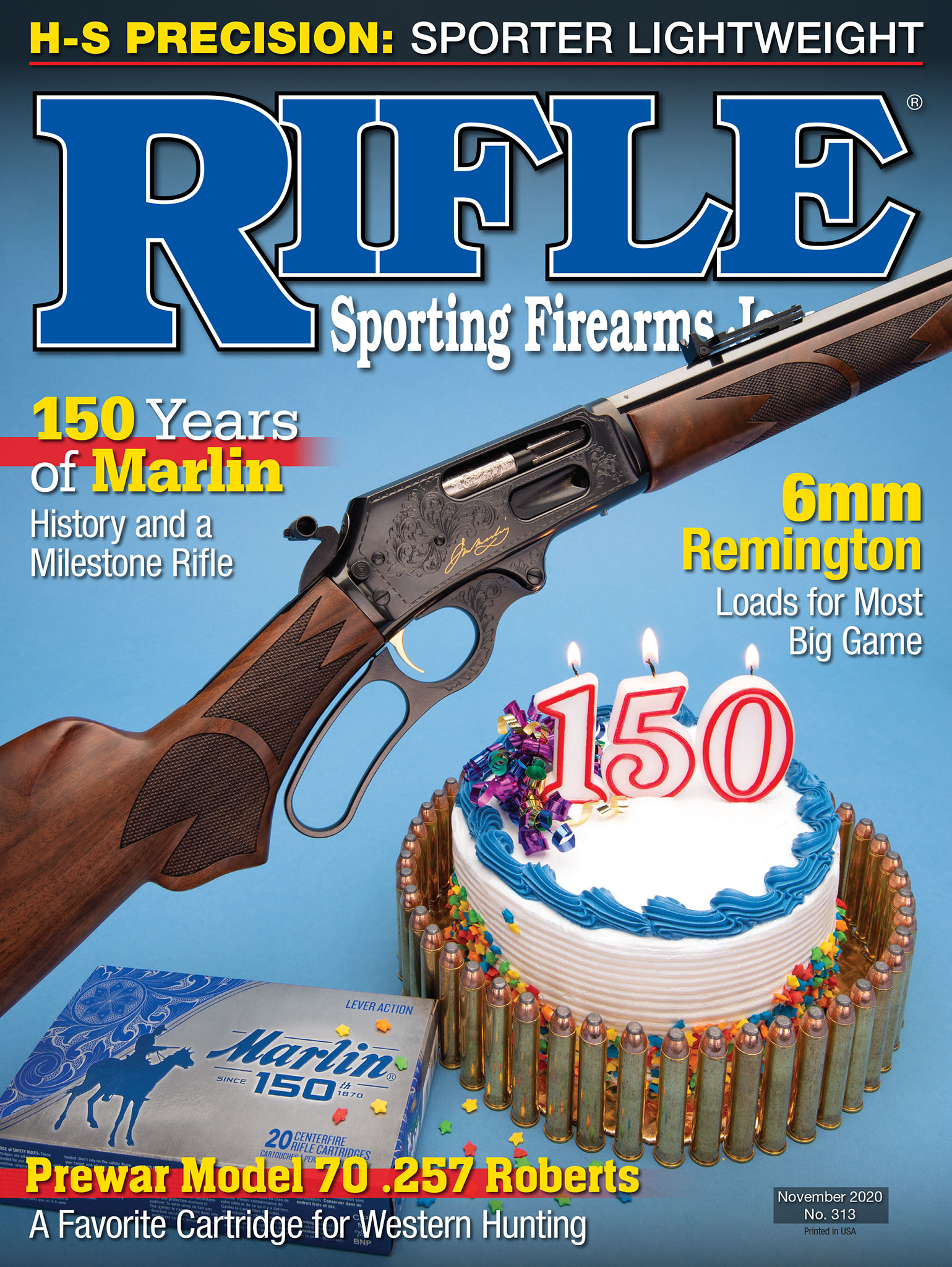Lock, Stock & Barrell
Essential Cleaning
column By: Lee Hoots | November, 20

A few personal examples include my late father’s 1958 Marlin Model 336 .30-30 carbine that spent much of its time in the mountains of Montana before I even knew it existed. Then there is the first rifle I took to Africa, a custom Remington Model 700 .270 Winchester built by High Tech Customs in Colorado Springs, Colorado, and third, a Remington Custom Shop Model 700 6.5 Remington Magnum that I was lucky enough to help craft.
Finally, this last one is just a basic Remington Model 722 .222 Remington (the grip checkered by the previous owner) with its original 26-inch barrel, iron sights and aluminum buttplate. It also came with an old Weaver K10 scope.
All of the reasons listed above are important enough to see that each rifle, including non-heirlooms and rimfires, are taken care of. They should be stored in such a way that they are not subjected to moisture or periods of excessive heat. Most soft cases will allow the transfer of moisture.

the bed or stowed in a closet. I do all of this two or three times a year and have never found one problem rifle. There is one bolt action that was given to me with excessive rust damage, but keeping it in a silicone-treated sock, as well as oiling it now and then, has held back further damage. When gun oil is applied, don’t overdo it – you’ll end up with a sticky mess.
Those are the basics of keeping the outside of a rifle clean, but I know a couple of guys who ignore the barrel bore, never cleaning it unless something goes screwy with accuracy. That’s all well and good – until someone opens up on a distant mule deer buck and the bullet goes who knows where!
I used to do the same thing when young and dumb – expecting bullets to land where the “perfectly-zeroed” scope guided them. Once I hadn’t cleaned the barrel on a .243 Winchester for months, and to this day remember the first bullet impacting about 3 inches left of center. A second shot punched a hole through the target, but it, too, was 3 inches left of center and a little high. The barrel was scrubbed with Hoppe’s No. 9, a brush and elbow grease followed by a few cotton patches. The next weekend, the same load was shooting 1.20-inch groups 2 inches above point of aim. A clean barrel is always preferred, one reason competitive benchrest shooters clean their bores at regular intervals.
Yes, some rifles continue to shoot very well with severely- fouled barrels, but the idea of taking a shot at a game animal with a rifle that has not been cleaned for weeks, or maybe months or longer (its barrel, at least) can lead to disappointment. As such, when a rifle is taken home following a hunt or a trip to the range, its barrel gets a thorough scrubbing, even if only two bullets have passed through it. It makes sense to start each shooting session (any rifle) with a clean barrel. This provides a standardized starting point for which any load can be measured time and again.
Newer solvents have made the task of removing copper easier. While admitting the smell of No. 9 brings back fond memories, modern “foam” cleaners are easier to use. Foaming cleaners such as Gunslick and Wipe-Out work just fine, providing they are left in the barrel long enough to penetrate the powder and copper residue.

In order to clean a barrel with the least stress to the rifle, use a cleaning vise instead of placing the rifle on its side and trying to hold it with one hand while using the other to push a flexing cleaning rod tipped with a jag and tight-fitting cotton patch through the barrel. The best option is a bench-mounted vise padded with thick rubber that allows clamping the barrel muzzle at a downward angle so any cleaning liquid will flow out the muzzle instead of back toward the receiver and stock, thus keeping solvent from damaging the stock’s finish or gumming-up the action. In the absence of such a setup, several portable, plastic “gun vises” work well enough.
Two of these plastic versions have been tested over time. They work but are not perfect. The first is an older Tipton Gun Vise that was eventually replaced because it began to sag in the middle, and the rubber inserts made to protect and hold the stock became too loose to be of help. The inserts were eventually epoxied in place and the vise was stored away just in case.
A newer Hoppe’s vise is far stiffer and so far has held rifles tightly. It does have one drawback. Its rather small “feet,” one on each corner, tend to slide across slick surfaces when pushing a tight cleaning patch down the bore.
A vise is also important to riflemen who mount their own scopes. There is no better way to make certain a scope’s reticle is plumb with the receiver. Nor is there a smoother path to a clean barrel that provides consistent, repeatable accuracy. The next time accuracy seems to go out the window for no specific reason, give the bore a good scrubbing.


